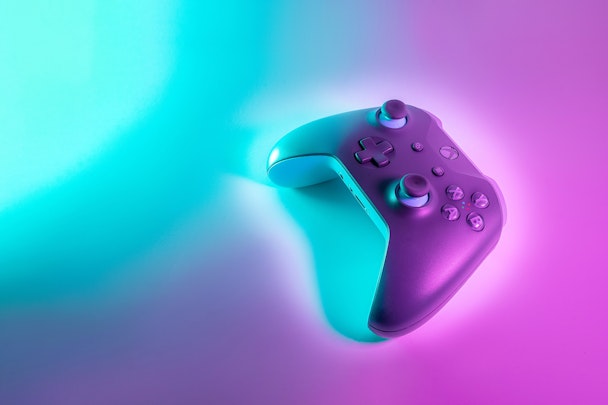Behind Future’s mega drive to understand its gaming audiences
As the most lucrative entertainment medium globally, gaming is hugely influential. Gaming IP extends into film, TV and music, to the point that the vast majority of the public is reached by a gaming brand. It means that there is a huge commercial opportunity for publishers to cater to gaming audiences and, as Future plc’s latest research project demonstrates, that cohort is larger and more diverse than many would assume.

As gaming audiences grow, the need to understand them becomes more acute
The research was conducted as part of a drive to understand the commercial opportunities around gaming, both for Future’s gaming brands and its advertising partner. It found that the gaming audience has a greater propensity to pay, multiple touchpoints with brands and – crucially – is a largely self-selected audience amenable to advertisers.
The report found that the past few years have drastically increased the time spent with games. In addition to overall growth in audiences, 64% [of gamers] said they had increased their gaming time in the UK (68% US), driven mainly by more time at home. This also has obvious implications for their ability to invest in their gaming, with e-commerce activity around the hobby driving sales of individual games and hardware alike.
The report states that: “Female gamers come to the fore here. Not only are UK women around 30% more likely than men to have increased their gaming time ‘a lot,’ they are also significantly more likely than men to cite an increased and growing interest in gaming per se, as a driver for playing more.”
Despite that commercial perspective, Future’s insights director Richard Thomas believes the greater opportunity lies in the communities that lie behind the trends: “You’ve probably got an element that is completely new to gaming over the last couple of years, and it picks up on the social part. And that’s more important to them than becoming an absolute kind of gaming expert, or whatever you want to call them.
“So any opportunity to develop that idea and, as things start getting back to normal, potentially to lean into the community aspect, whether that’s around events, there’s definitely opportunity there. People are now saying, ‘Yeah, I’m into this, I’m a gamer, the pandemic has given me more time and opportunity.’”
The lucrative nature of gaming – and the attendant e-commerce opportunity – has benefited those publishing brands with strong gaming portfolios. As the nature of gaming has shifted, with players becoming more console- and platform-agnostic, advertisers have a wider range of potential consumers across titles. For Future, which has a long tradition of publishing gaming titles, that resurgence in interest is a tremendous opportunity.
Thomas explains: “[Engagement is] not necessarily through the endemic gaming brands, it might be anywhere across our portfolio – because we’re going to build out this story around female gamers, for example, who are more into mobile and casual gaming. We can hit them and target them anywhere we like across the portfolio. They come to us because they trust us, because there’s legacy and there’s heritage, and it’s curated, and it helps them and it kind of entertains and indulges their passion.”
Mega drive
Future has been one of the key beneficiaries of the e-commerce boom, and its recent acquisition of the Dennis titles looks to consolidate its hold on much of the gaming magazine market. That provides tremendous potential for it on the digital recommendations and affiliate side – if it can weather the knock-on effects of the global chip shortage. The widespread inability of gaming hardware manufacturers to ship as many units as forecast has led to notorious shortages in graphics cards and the latest generation of consoles on the market.
Despite that, a Future spokesperson told me: “In line with Future’s mission to provide the most valuable content to its readers, its e-commerce technology – Hawk – tracks stock levels, meaning that out-of-stock products are not shown to audiences. Editorial teams also take note of product availability and are mindful how they write about unavailable products. In 2021, Future content drove £26.3m in console sales globally, [and] this included both next-gen and legacy models.”
With the rapid broadening of the gaming landscape, however, Thomas is keen to stress that the insights gained through research of this nature are valuable in their own right, for the greater understanding of the gaming audience.
“As you read around that stuff, it always comes back to the people. For me, that’s all driven by people who have moved gaming from quite a niche, slightly geeky, nerdy thing 20 years ago to very much part of the mainstream now.
“It’s actually beholden on us to not just grow, to talk about bigger and bigger numbers and engaging with more and more people ... It’s actually understanding those people. Because how can you possibly be a subject matter expert across 50 different categories, for example? You can’t, so we’ve got to keep going back and talking to people and understanding where they’re at basically.”
With gaming audiences becoming more diverse and with a number of new community touchpoints available across mobile platforms, the line between gamers and non-gamers is blurring.
For publishers, even in the midst of a squeeze on hardware, that creates a huge opportunity – and an ever-more-pertinent need to understand audience segments. The still-extant snobbery from some ‘hardcore’ players toward other cohorts within the gaming world, and the hesitance of some to even label themselves as gamers, complicates any marketing messages. The need to speak authentically and to understand those various aspects of a single audience, then, is paramount.

